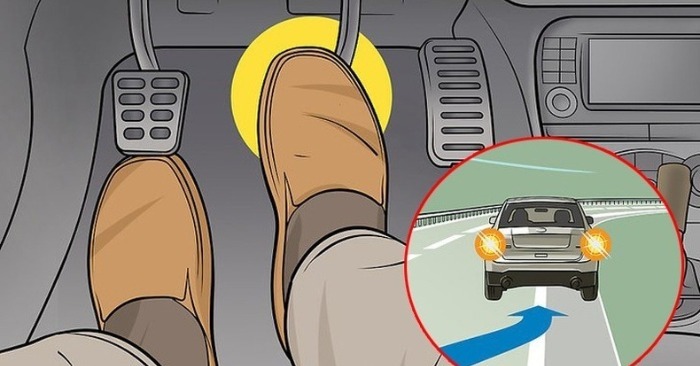Every driver has thought what would happen if the brakes suddenly stopped! 🚗🛞 Such intrustive thoughts have crossed our minds at least for once! 💬🤔 In this case there is a clean plan of action to bring the car to a safe stop that we should know! 🆘‼️ Life is unpredictable and crisis can happen when we expect them the least! 🤫🤯 However, there is a method that will help us cope with this frightening experience which I will share in this article! 👇
Every driver has likely wondered at some point: What if the brakes suddenly stop working? While rare, brake failure can happen, and knowing the right steps to take in a crisis can make all the difference. Here’s a clear plan of action to bring your car to a safe stop if your brakes fail while driving at high speed.
Stay Calm and Assess the Situation
The moment you press the brake pedal and nothing happens, your first instinct mikght be panic. However, staying composed is crucial. Instead of reacting impulsively, focus on quickly diagnosing the issue and finding the safest way to slow down.
Steps to Slow Down a Car Without Brakes
Pump the Brake Pedal
Sometimes, a temporary loss of braking power is due to a drop in hydraulic pressure. Try pressing the pedal several times to see if the brakes start responding.

Use the Handbrake Carefully
The parking brake operates independently of the main braking system and can be a lifesaver. However, it should be applied gradually—sudden jerks could cause the car to skid, especially on wet or slippery roads.
Downshift to Reduce Speed
Engine braking is one of the safest ways to slow down. If you drive a manual car, shift down gears one at a time, allowing the engine to reduce speed naturally. If you have an automatic transmission, use lower gear settings like “L” or “2” to achieve the same effect.
Use External Friction to Your Advantage
If the car is still moving too fast, look for natural obstacles to help slow down. Driving onto gravel, hitting small roadside barriers, or even brushing against a curb can create resistance that reduces speed safely.
Alert Other Drivers
Promptly turn on your hazard lights and honk your horn to warn others that your vehicle isn’t responding normally. This helps prevent collisions and gives surrounding drivers time to react.
Find a Safe Stopping Point
If possible, steer towards an emergency lane, a grassy area, or an exit where you can safely bring the vehicle to a stop without endangering others.
After You Stop: What’s Next?
Once your car has come to a halt, don’t attempt to drive it further—even if the brakes seem to respond as they should once more. Instead, turn on your hazard lights, place an emergency triangle if necessary, and call for roadside assistance. A professional inspection is essential before using the car again.
Preventing Brake Failures in the Future
To avoid finding yourself in this terrifying situation, regular brake maintenance is key. Here’s how to keep your braking system in top condition:
Check Brake Fluid Levels: Low fluid can lead to pressure loss and brake failure.
Replace Worn Brake Pads and Discs: Neglecting them can result in reduced stopping power.
Avoid Overheating the Brakes: Long descents or aggressive driving can cause brakes to lose effectiveness.
Schedule Routine Inspections: In-depth inspections by specialists help reveal underlying concerns before they become dangerous.
Final Thoughts
A brake failure at high speed is a frightening experience, but with the right approach, you can bring your car to a stop safely. Stay calm, use alternative braking methods, and always ensure your vehicle is well-maintained to minimize risks on the road.







